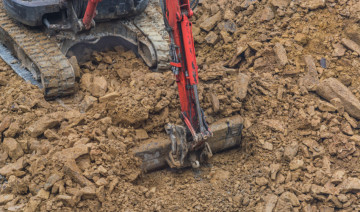{article.name}
Mini Excavator Project Considerations

- Share this:
- Share on Facebook
- Pin on Pinterest
- Tweet on Twitter
Mini excavators are incredibly versatile machines that can handle a wide range of digging, demolition, and excavation tasks. But choosing the right size of mini excavator for your project can be a bit of a challenge, especially if you're not familiar with the different sizes and specifications available. In this blog post, we'll take a closer look at how to choose the right-sized mini excavator for your project.
- Determine Your Project Requirements
Before you can choose the right size of mini excavator for your project, you need to determine your project requirements. Consider the following questions:
- What is the size of the area that needs to be excavated?
- How deep do you need to dig?
- What types of materials will you be excavating?
- Will you be working in tight spaces or open areas?
- How much weight do you need to lift and move?
Answering these questions will give you a better idea of the size and specifications of the mini excavator you need.
- Consider the Weight and Dimensions of the Mini Excavator
Mini excavators come in a range of sizes and dimensions, and it's important to consider these factors when choosing the right size for your project. Think about the following:
- How much does the mini excavator weigh?
- What are the dimensions of the machine?
- Will it fit through the access points on your worksite?
The weight and dimensions of the mini excavator you choose will affect how easy it is to move around your worksite, and how much space you need to maneuver.
- Evaluate the Digging Depth and Reach
Another important consideration when choosing the right size mini excavator for your project is the digging depth and reach. The digging depth refers to how deep the machine can excavate, while the reach refers to how far it can reach from the machine's base.
Make sure to choose a mini excavator with the digging depth and reach you need for your project. For example, if you need to dig deep trenches, you'll need a machine with a greater digging depth than if you're simply excavating a shallow area.
- Look at the Machine's Bucket Capacity
The bucket capacity of a mini excavator refers to the amount of material the bucket can hold. This is an important consideration if you'll be excavating large quantities of material. Make sure to choose a machine with a bucket capacity that can handle the volume of material you need to move.
- Consider the Machine's Power Source
Mini excavators can be powered by diesel engines or electric motors. Each has its own advantages and disadvantages, so it's important to choose the power source that's best for your project.
Diesel-powered mini excavators are generally more powerful and better suited for heavy-duty projects, while electric mini excavators are quieter and more environmentally friendly.
- Determine Your Budget
Finally, you need to consider your budget when choosing the right size mini excavator for your project. Mini excavators vary in price, and larger machines tend to be more expensive than smaller ones.
Consider the cost of renting or buying a mini excavator and choose the size that fits your budget while still meeting your project requirements.
In conclusion, choosing the right-sized mini excavator for your project requires careful consideration of your project requirements, the weight and dimensions of the machine, digging depth and reach, bucket capacity, power source, and your budget. By taking these factors into account, you can select the best mini excavator for your project and ensure that the job is done efficiently and effectively.
© 2025 Westville Grand Rental Station. All rights reserved.
Serving Southern NH and The Merrimack Valley Since 1990
View our accessibility statement
Driven by New Media Retailer

Comments